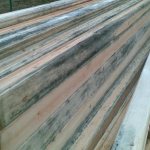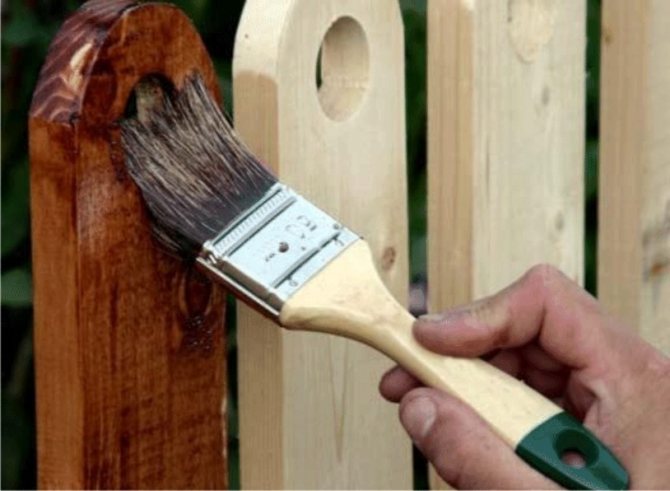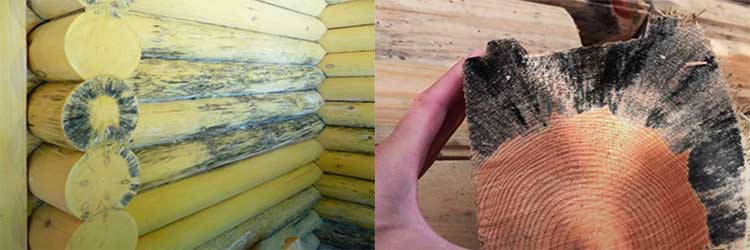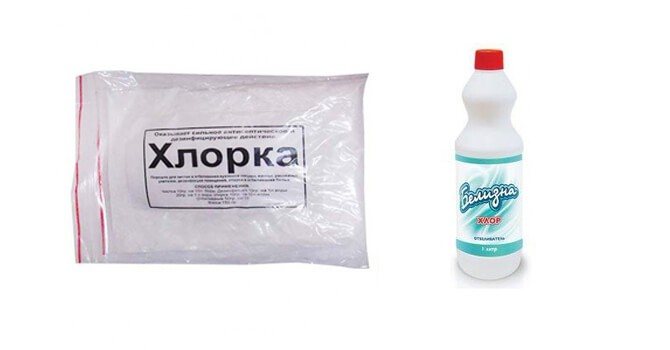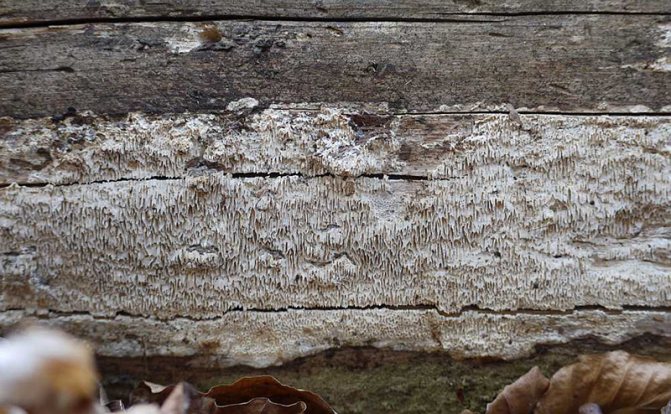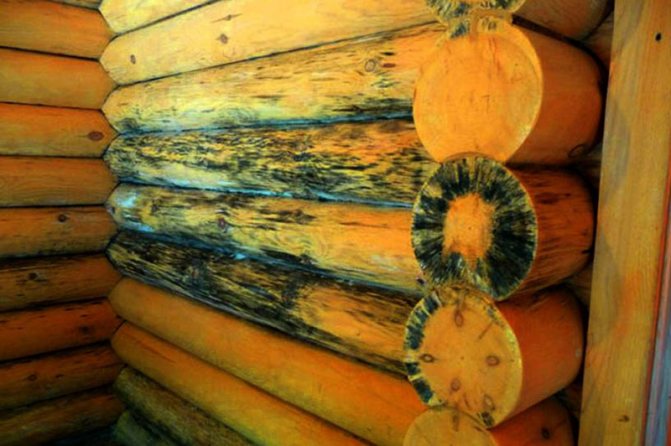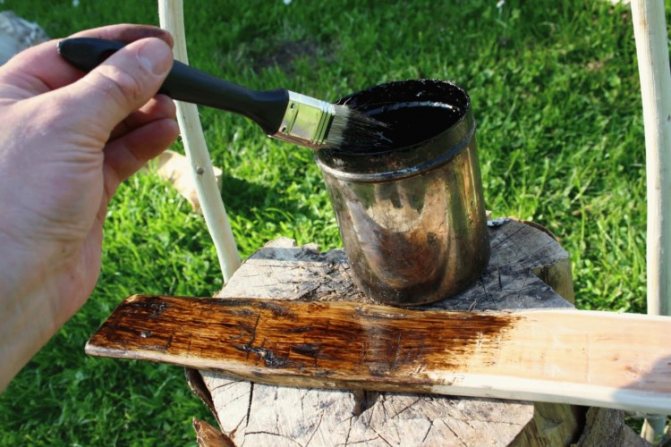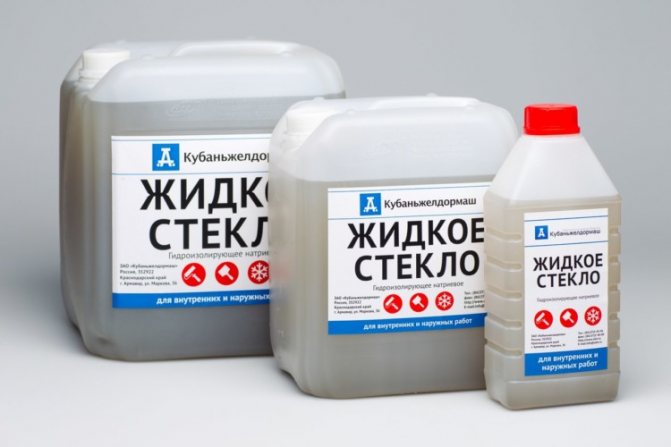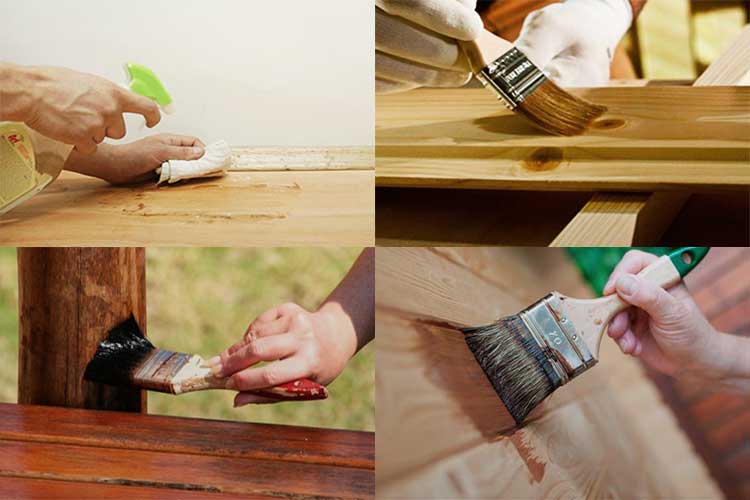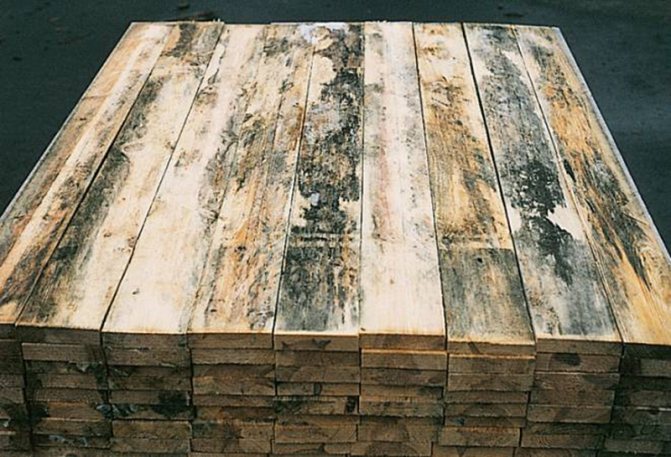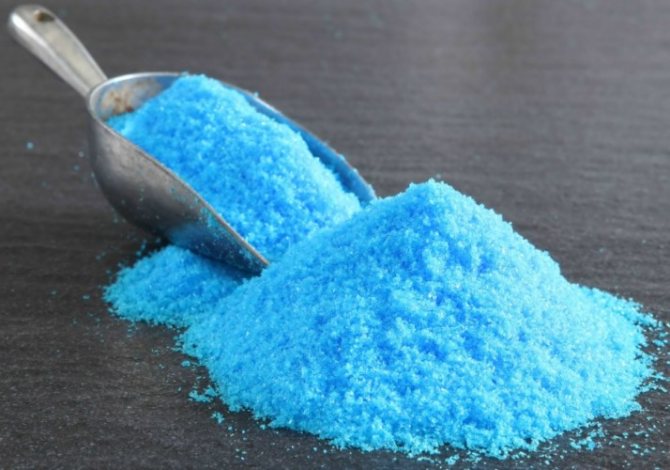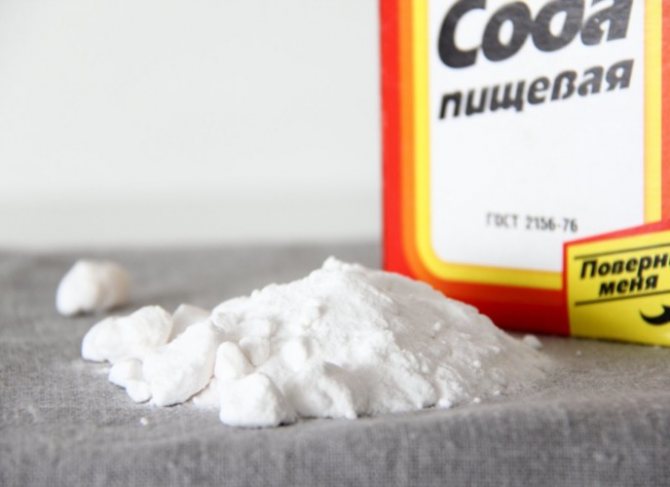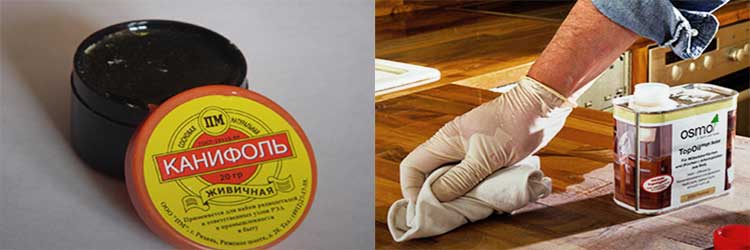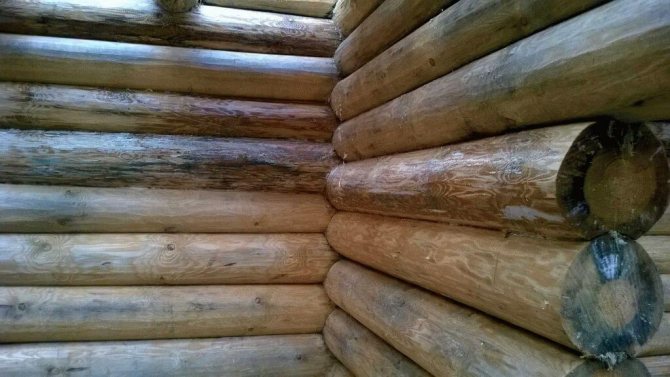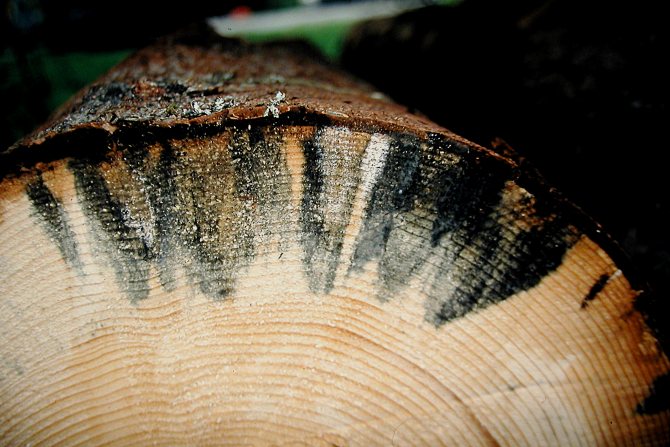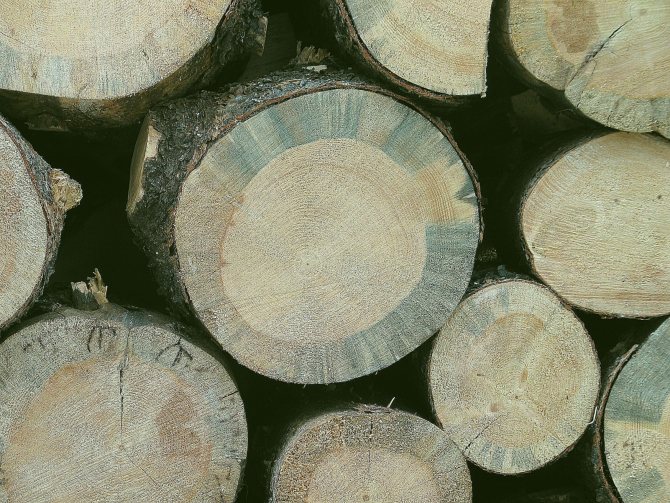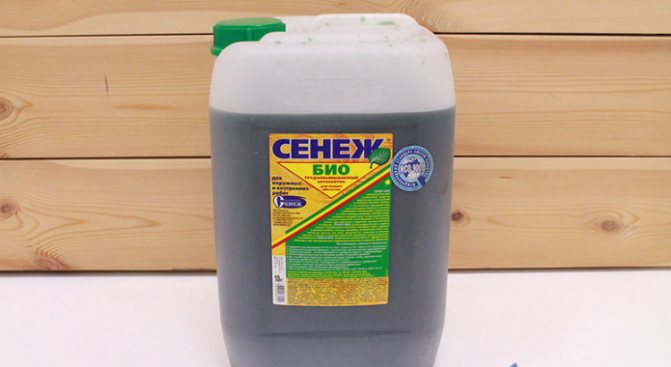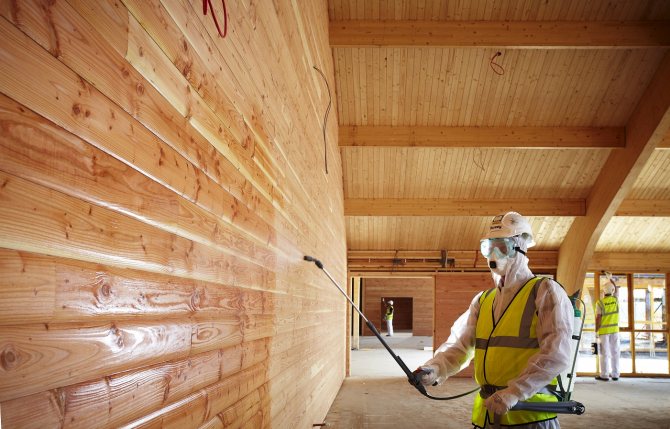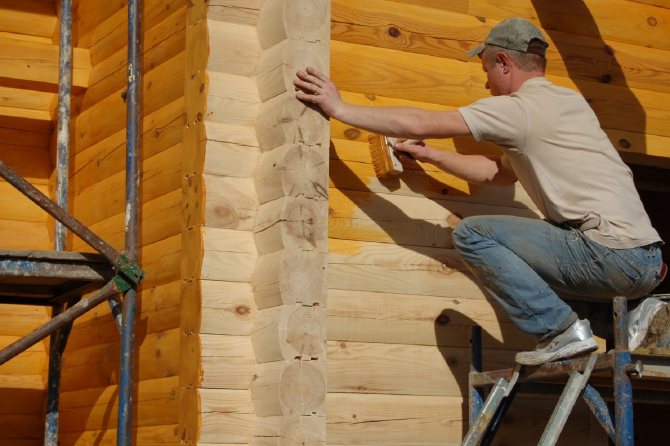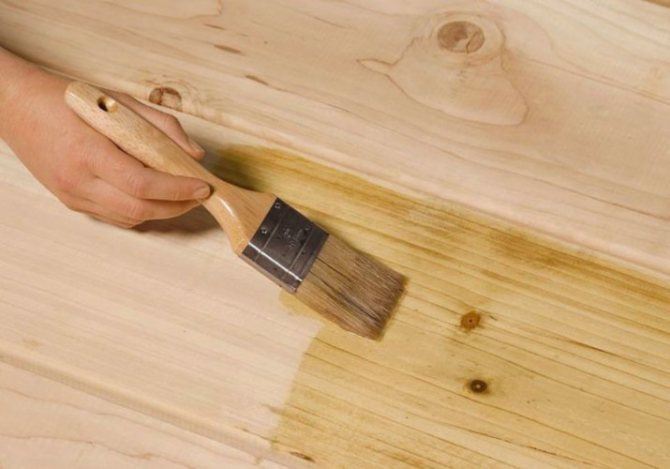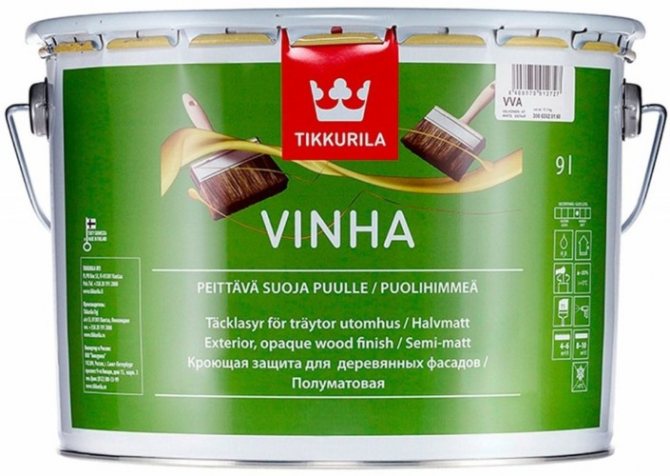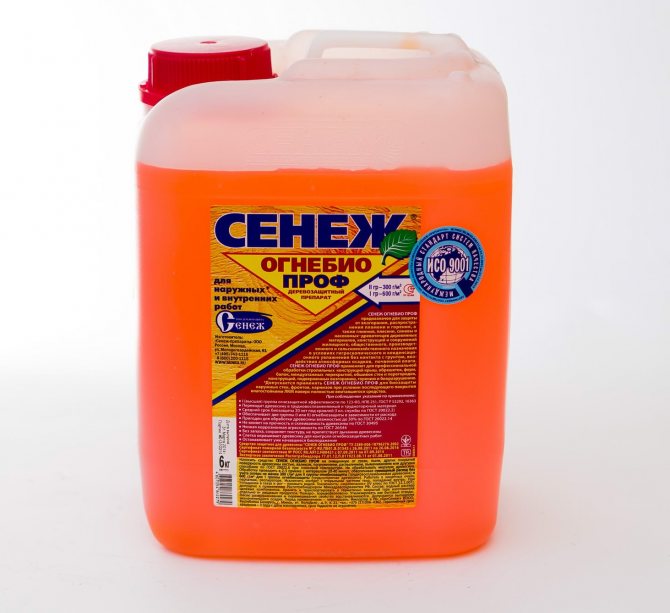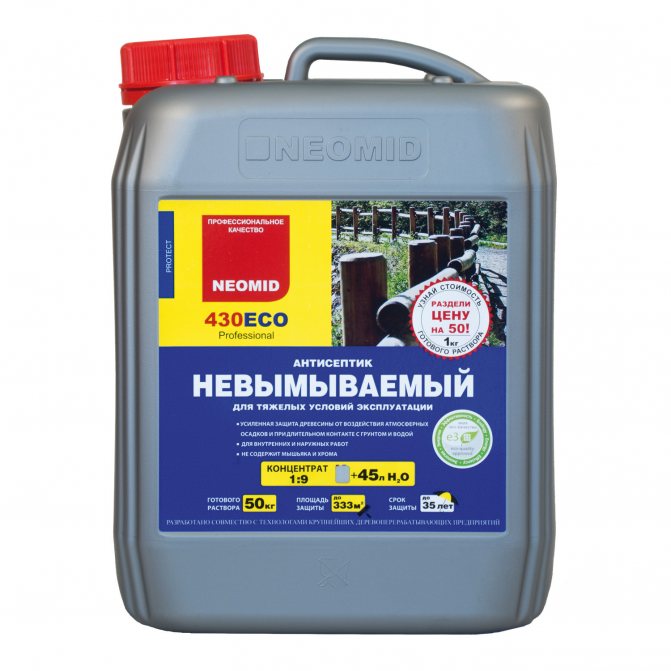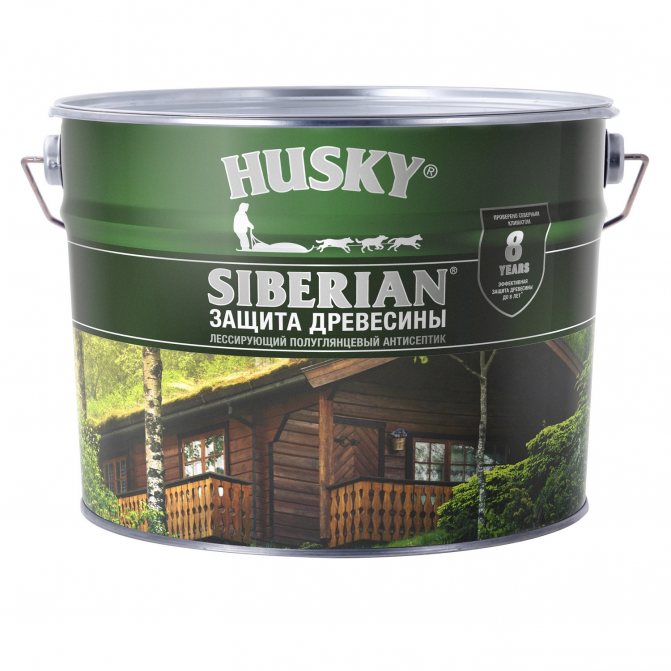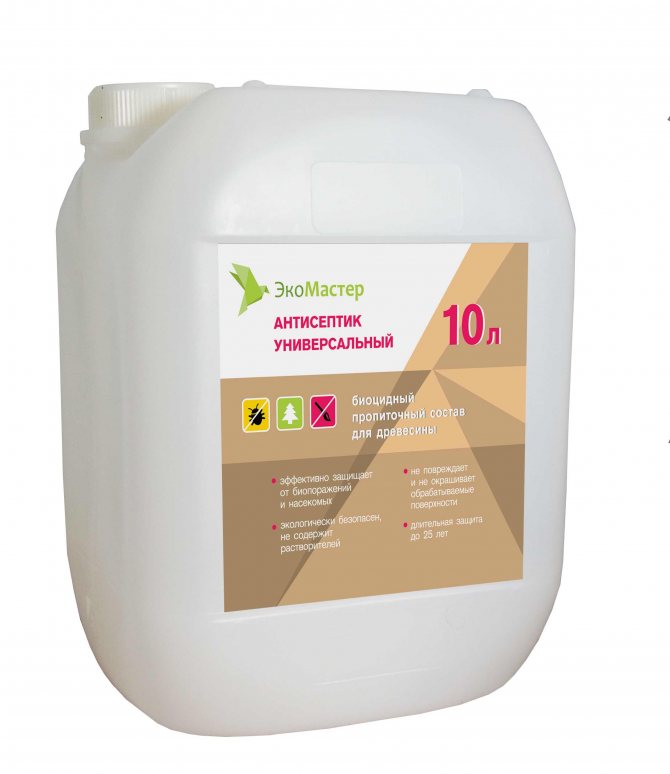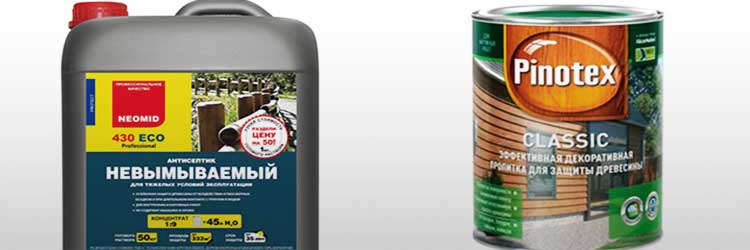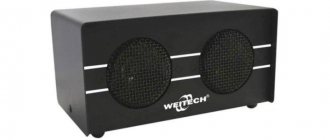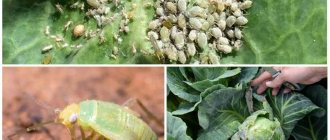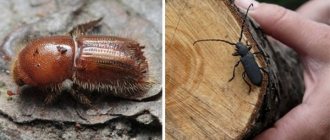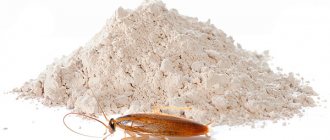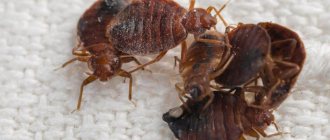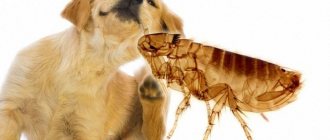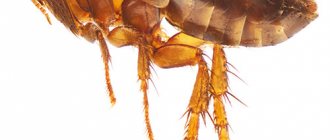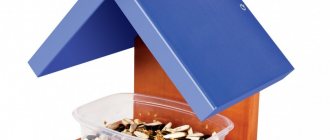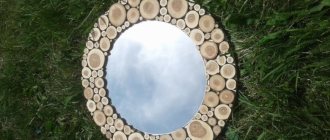The desire to build your own warm and safe home is faced with the need to choose an environmentally friendly material with low thermal conductivity. At the same time, he should also save costs for external and internal finishing. When considering the options, you understand that the listed characteristics are better suited to wood. Eco-friendly, beautiful and budgetary, but requiring special antifungal care material. Competently executed processing of wood from fungus and mold will extend the service life of boards and logs, preserve their naturalness and purity for decades. The impregnation will take care of the preservation of the decorative characteristics of the building blocks - the clarity of the pattern, color and structure.
The market offers a huge number of remedies, but they are often resorted to when the fungus has already appeared on the tree - how to get rid of it and prevent re-infection? What means to choose so as not to spoil the environmental performance of the material? How to apply the funds correctly? Will consider these and other issues in more detail.
A diverse and dangerous world of mold
The first signal that mold has started in the house is a change in the color of wooden surfaces, the appearance of characteristic blue, brown, pink and whitish spots, gray streaks and a damp surface. Some fungi do not destroy the texture and do not penetrate deep into the wood, but spoil the appearance of wood wall cladding, floorboards, and ceiling finishes.
Mold appears not only in country houses built of rounded logs or timber, but also in city apartments with a poorly adjusted ventilation system or drafts. For example, unpleasant dark spots may appear on the lining, which is often used to ennoble a balcony or loggia.
Colonies of black mold appear on planks much less frequently than on stone, brick or tile grout, and blue is a frequent visitor to houses made of timber.
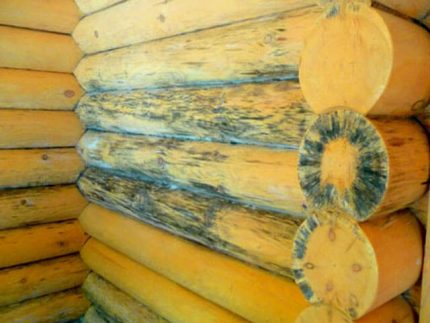
If during the construction of the house a bar or a log was not treated with antiseptic impregnation, soon pale ink stains of mold, which is called "blue", will appear on the wooden surface
Fungi, like the very common blue, completely change the color of the wood. They feed on protein, starch and sugar and grow quite quickly - the stain can double in just 10 days. But this requires one condition - the moisture content of the wood is above normal.
Blue is not believed to affect durability, so scaffolding and spore-infested lumber are often tested for suitability, and mold may be present in batches of boards to be repaired.
The most dangerous for wood is a putrefactive fungus. It feeds on the fibers of the material, breaking them down by secreted enzymes. First, bright brown spots appear on the surface of boards and logs, and after a few weeks or months, the wooden elements become unusable.
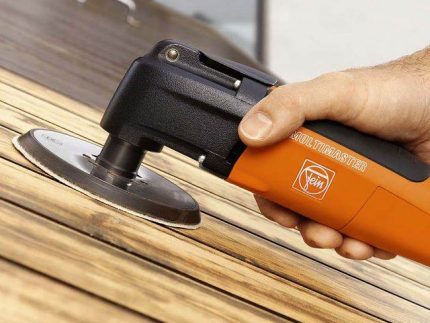

At the initial stage, you can still get rid of the fungus by cutting off and carefully polishing the surface (if possible), but if mold penetrates deep into the board or log, you can no longer save
Sometimes the process of development of the focus takes place secretly: several subtle stains appear on the upper part, but active destruction occurs inside."Diseased" details of the sheathing or log house can be recognized by a dull knock. A hard-looking timber, affected by rot, breaks when pressed.
Mold is harmful not only to the wood itself, but also to people who inhale air contaminated with spores. If there are allergy sufferers in the house, they will always feel unwell when foci arise. Small fungi are dangerous for healthy people - they can provoke the onset or exacerbation of various diseases of the respiratory system.
Image gallery
Photo from
The appearance of blue mold on a new log house
Result of lack of ventilation
The result of the use of non-galvanized fasteners
Lack of water protection in baths and bathrooms
The most vulnerable and susceptible to the appearance of mold in a wooden house is a bathroom or a combined toilet. The shower room suffers in the same way, even if the box is impeccably sealed and does not allow a drop of water to pass through.
Therefore, when arranging hygienic rooms in buildings made of timber or logs, it is imperative to observe the technologies of their organization and use protective antiseptic agents.
What to choose?
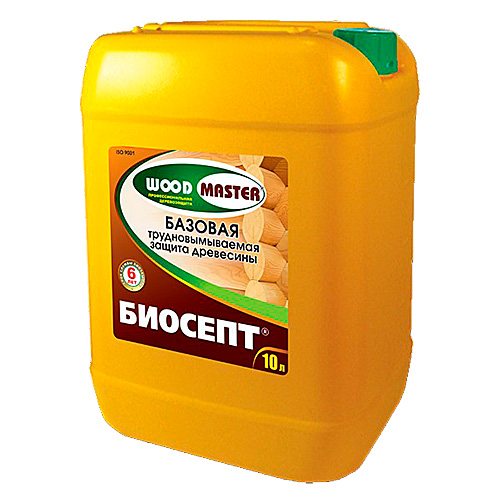

The range of wood impregnations is wide enough. Which one should you give preference to? According to consumer reviews, you can make a list of the most popular remedies:
- Antiseptics are used for all types of work. The type of tree and the degree of damage do not matter. The cost is low - about 60 rubles.
- Biox. It is colorless and colored. Affects the relief of a wooden surface. It is a good prophylactic agent. 1,500 rubles for a ten-liter bucket.
- Biosept. Suitable for interior surfaces. It contains the safest substances possible. It provides long-lasting protection and effectively fights against external influences. The price for a 5-liter container is 400 rubles.
- Aquatex. Especially effective for processing boards and products made from them. 20 liters costs about 1800 rubles.
- Pinotex. Antiseptics of this company are available in the form of paints, oils and conventional solutions. They give wooden structures a beautiful shade, protect them from fading and decay for a period of about 10 years. A 3-liter container costs about 800 rubles.
- Elkon. There are several types, each of which is intended for specific purposes. This is the protection of freshly sawn wood, ends, baths and saunas. Suitable for work inside and outside buildings. It costs about 600 rubles 0.9 liters.
Among foreign manufacturers, antiseptics from TIKKURILA and Dulux companies announced themselves most loudly.
Protection of wooden products from mold, mildew and decay processes is a very important stage in construction. Quite a lot depends on it, for example, the service life. There are several ways to provide this protection. These are folk methods and the use of impregnations made from chemicals. All of them perform their direct functions, and also take care of the appearance of the tree and increase some of its properties.
Causes of wood destruction
Suppose that the interior of the house has been tiled with perfectly healthy planks. Nevertheless, over time, they also began to turn blue and gradually become covered with ugly stains. Where does it come from?
Mold multiplies by spores, which are present absolutely everywhere - in the forest, in the fields, on the roads. It is estimated that forest-dwelling species living on living trees cover approximately 40% of the surface of the trunks and branches of these trees and shrubs. They do not destroy the bark and other tissues, but they make them more porous.
Spores are easily carried by wind, animals and even shoes. If microorganisms by any of the listed methods have entered the house, where favorable conditions have been created for them, they quickly begin to multiply. The ideal conditions for the existence of mold are high humidity (from 70%) and temperatures from + 5 ° C to + 30 ° C.
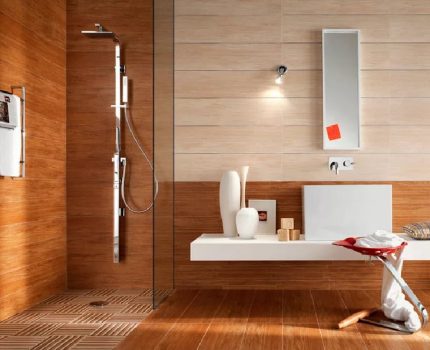

Good ventilation and moderate humidity are two conditions necessary to prevent mold growth in rooms where water is constantly used, such as a bathroom
Wood is only one of the materials on which whole colonies of fungi settle. They can grow on rubble stone, concrete, plaster, paper and even plastic.
The owners of seasonal country houses in central Russia know very well: if you do not regularly heat a wooden house or do not monitor the condition of the basement and foundation, then dark spots will appear in the corners, on the ceiling and even on furniture.
The same trouble threatens cellars and wooden baths if ventilation is not organized in them. Even the inner lining of the clapboard can become infected with a fungus and become completely unusable if it does not have the ability to ventilate and dry out.
The lack of air circulation also favors the rapid growth of moldy colonies. This can be seen in urban apartments, where bathrooms are lined with wood paneling and ventilation is impaired.
If the surface of the panels is not treated with a protective compound, they will soon be covered with a light white or black coating, and over time the cladding will take on a neglected look.
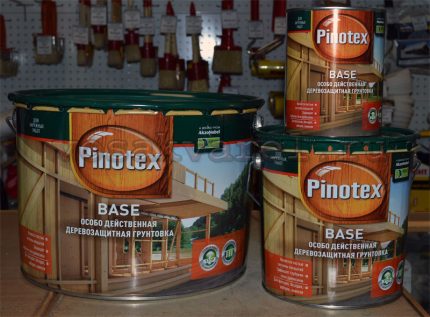

Pinotex Base - deep impregnation for the top layer of wood, acts as a primer and antiseptic. It is used in combination with decorative products - Pinotex Wood Oil, Pinotex Classic, etc.
Thus, the reasons for the appearance of fungus or mold are the lack of waterproofing, disturbances in the operation of ventilation, high air humidity.
Prophylaxis
Prevention should be carried out even before the boards become a wooden structure. Methods that relate to the prevention of mold and mildew:
- The moisture content of a tree that has just been felled can change over time. Therefore, drying should take about 1 year.
- To avoid the appearance of capillary moisture, it is necessary to equip a waterproofing system.
- Protection from atmospheric humidity will be provided by special impregnations and paints and varnishes.
- The use of heat and vapor insulating materials will protect against condensation. The first one needs to be placed near the outer surface, and the second one inside.
Traditional methods of getting rid of the fungus
When using funds that are usually called folk, you need to remember three points:
- their use is often remembered when it is too late and more effective solutions are needed;
- it is difficult to remove overgrown foci with household solutions, and when they are destroyed there is always a risk of new colonies appearing;
- getting rid of mold, you need to simultaneously eliminate the causes that gave rise to it.
Consider the available tools that you can find at home or buy.
Chlorine bleach treatment
The shops sell a solution that is traditionally called "Whiteness". The compositions of different manufacturers may differ, but the main substance does not change - it is sodium hypochlorite, a powerful antiseptic and oxidizing agent.
At chemical plants, it is used to disinfect water and various surfaces, in everyday life, they bleach fabrics, disinfect bathrooms.
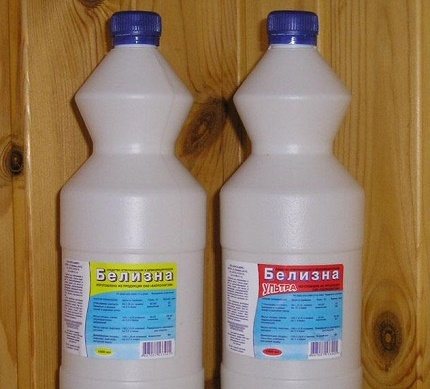

Do not forget that any products containing chlorine are potentially hazardous to human health. Once in the respiratory tract, they can cause vomiting, dizziness, and with increased doses and poisoning, therefore it is necessary to use protective equipment: mask, gloves, respirator
When using the solution, it is important to determine its con is diluted with water in a ratio of 1:10, but a more powerful antiseptic is needed to combat mold, so the proportions change by 1: 1.
Whiteness is ideal for smooth surfaces such as tiles or hard plastic.The wood has a porous texture, which is very difficult to process, so the chlorine solution is only suitable for removing external signs, stains and streaks, it will not save you from deep penetration of the fungus.
The concentrated composition is applied in several layers with a paint brush, then washed off with clean water. If the hearth is in an inaccessible place (in the attic), the product can be left on.
Pharmacy antiseptic solutions
Hydrogen peroxide, which is used to treat wounds and scratches, does an excellent job with fungus. As a rule, a small bottle of peroxide can always be found in the medicine cabinet, so nothing prevents you from doing a small experiment.
Moisten a cotton pad with a few drops of the solution and wipe the wooden surface affected by mold. If the streaks disappear, you can treat the already clean area several more times.
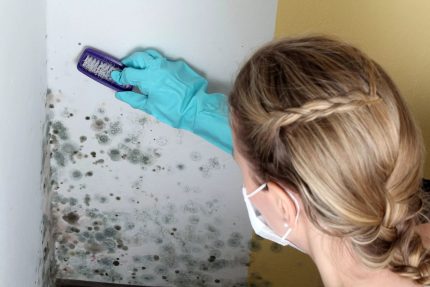

As with chlorine-containing substances, there is no need to expect miracles from peroxide. It can be used to clean tiles, porcelain stoneware, enameled or concrete surfaces, but wood is a soft material and cannot be quickly "cured"
If you purchased a bottle with a 3% solution, do not dilute it with water, this concentration is not considered strong. It is enough to apply peroxide to the damaged area and leave for a while, then repeat the procedure.
The second solution "from the pharmacy" is ammonia, which is a part of window cleaners and washing the print heads of inkjet printers. It also works effectively on smooth surfaces (glass, earthenware, plastic), and with moderate success on wood (or plasterboard).
The procedure should be carried out according to the same rules as with "Whiteness": dilute in a 1: 1 ratio, do not forget to wear gloves and a respirator.
The use of "kitchen" products
At least two products that are used to combat mold can be found in your kitchen cupboard. This is vinegar and soda.
Vinegar, like "Whiteness", is not able to completely remove foci of mold, but, unlike it, it is absolutely safe for humans. It is not diluted with water, but in large quantities is applied to infected areas with a roller, brush or sponge.
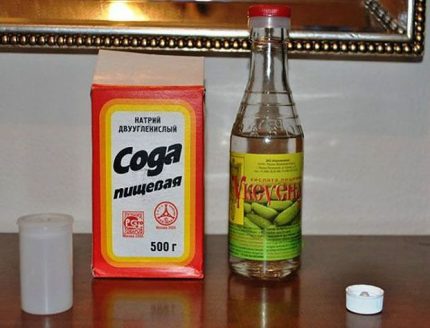

To increase efficiency, not weak table solutions are used, but vinegar essence or acid, which is more concentrated
If a hotbed of mold on a wooden surface resembles a plaque, then there is a chance to get rid of it completely. However, do not forget about the vitality of harmful microorganisms and every 2 weeks wipe the areas at risk - until you fix the ventilation and insulate the room.
Soda is also one of the safest remedies. It is often used for cleaning children's clothes, washing dishes. However, when paired with vinegar, it can destroy a small colony of mold. If you notice a scattering of small black dots on the walls, dilute the baking soda in vinegar and wipe the infected area.
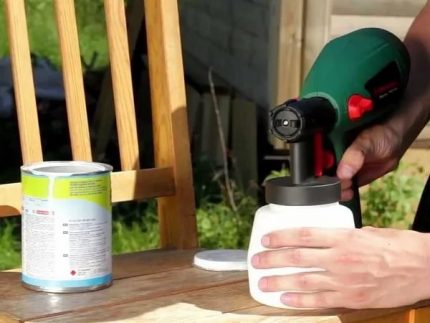

Acetic-soda solution can be placed in a spray bottle and sprayed walls (floor, ceiling, attic floors, exterior decoration of the house) at intervals of 2-3 hours
Soda does not harm the wood, so this option is also possible: put a small amount of powder on a slightly damp cloth and rub into the damaged area, and then rinse with water.
Preparing wood for processing
Before applying the antiseptic, the surface should be prepared: get rid of dirt, dust, oil and grease stains. Mixtures that protect a wooden surface from moisture are called water repellents. These film-forming substances are applied using spray guns, brushes or rollers. In this case, you should not allow gaps, avoiding unnecessary layers.
Work should be carried out at temperatures from +5 to + 30C. The effectiveness of the coating will appear within 15-30 hours. In the process of work, the influence of UF radiation, moisture, wind should be avoided.
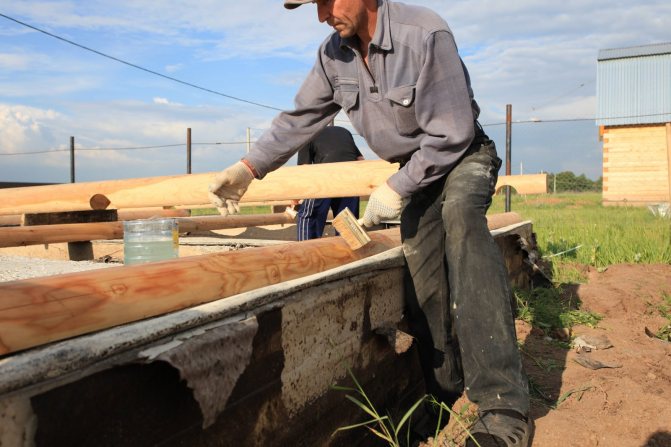

The ends of the logs and beams, the planed surfaces of the boards are the gate for the penetration of moisture into the product and, as a result, the emergence of a tree fungus. Get rid of it by applying this antiseptic in several layers after drying each for 1-3 hours. The greatest effect can be achieved if the entire surface to be treated is immersed in a container with a water repellent.
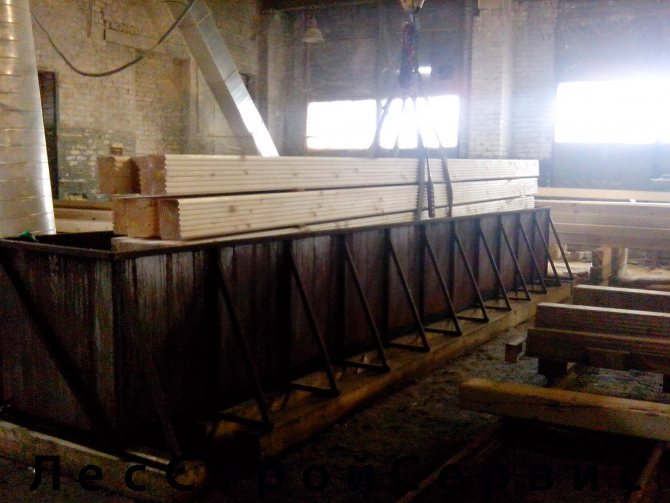

Antifungal protection, protection from mold are necessary if the wood is exposed to atmospheric precipitation, UV radiation, and a sharp temperature drop. Under these conditions, the process of decay starts, mold appears, and a fungus forms. If this moment is missed, and part of the surface has already been infested with parasites, then it will be impossible to preserve the entire structure.
Related article: Do-it-yourself wood aging methods
It is necessary to systematically carry out prophylaxis by saturating wood surfaces with the recommended means. They are not able to kill harmful bacteria, but only prevent their further spread. If the reproduction of parasites is very active, then fungicides are first applied - a very effective means of combating the fungus.
When the fungus has been removed, after the expiration of the period specified in the instructions, paint and varnish can be applied to the treated surface.
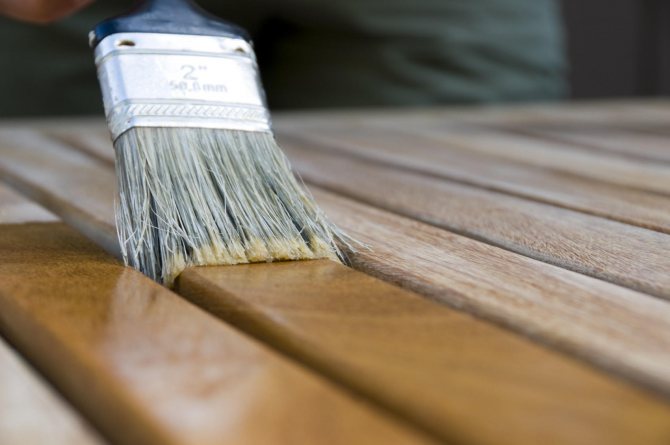

In the video: how to choose a wood preservative.
Professional mold control
There is another effective method of removing an unpleasant "guest" - calling specialists.
They can do something that the tenants of the house on their own will not be able to:
- diagnose the microclimate using high-precision instruments;
- analyze the condition of the affected objects;
- conduct an examination and draw up a conclusion on the nature of the occurrence of mold foci on wooden surfaces;
- will select the most effective professional products and treat areas of fungal growth with biocides;
- neutralize the air in the premises with u / f installations.
If necessary, professionals will carry out construction work: they will increase the efficiency of ventilation, reduce heat loss by laying insulation, restore normal humidity by installing waterproofing.
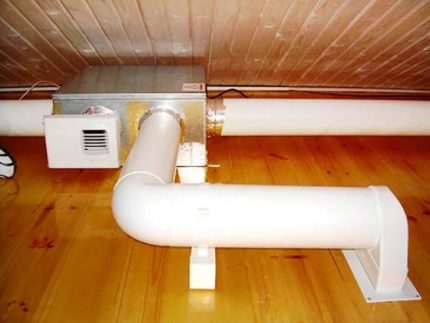

Arrangement of a reliable ventilation system in a wooden house will ensure a normal level of humidity and conditions under which mold cannot develop and destroy wood
The main advantage of professional treatment of the premises is the guarantee that mold will not bother you in the near future. The most responsible companies take on the obligation to carry out repeated measures to eliminate newly emerging foci.
If you decide to call a team of specialists, take care of the documentary registration of the order. In the contract for the provision of services, there must be a warranty period and a list of the procedures performed. If workers perform construction activities, then they must be guided by the requirements of GOST and SanPiN.
How to get rid of mold in a wooden house
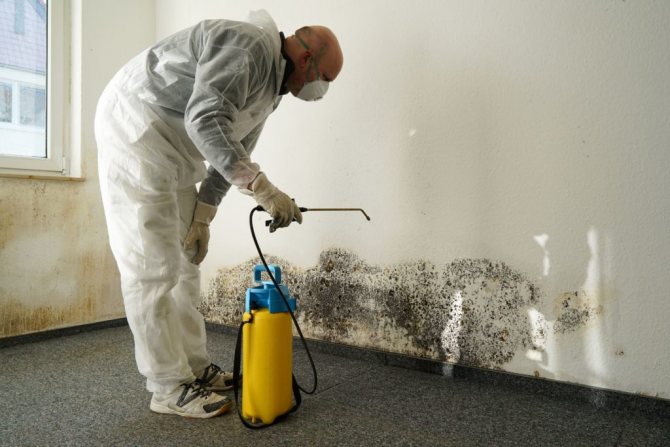

Simply removing mold from the walls is not enough - the result will not be long-lasting and the problem will return soon. The correct technology for removing mold is to first eliminate its cause: equip the basement waterproofing, ensure effective ventilation, allocate funds for insulation and create an optimal heating system.

